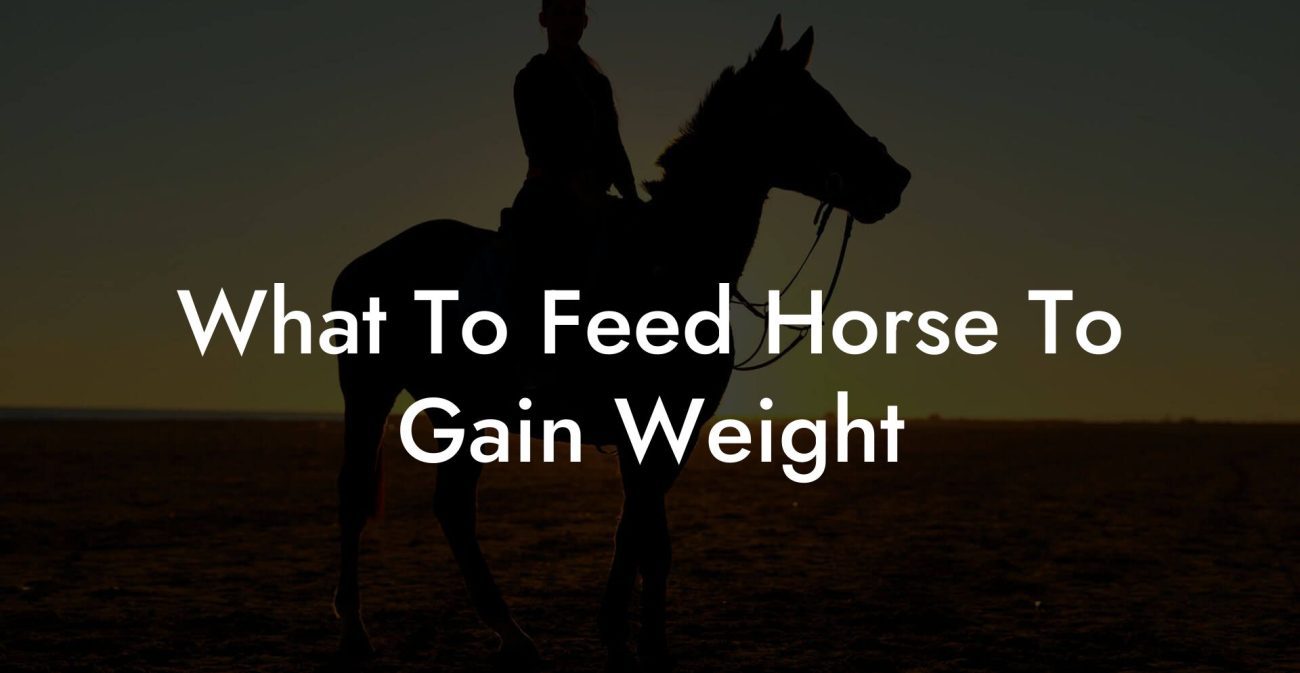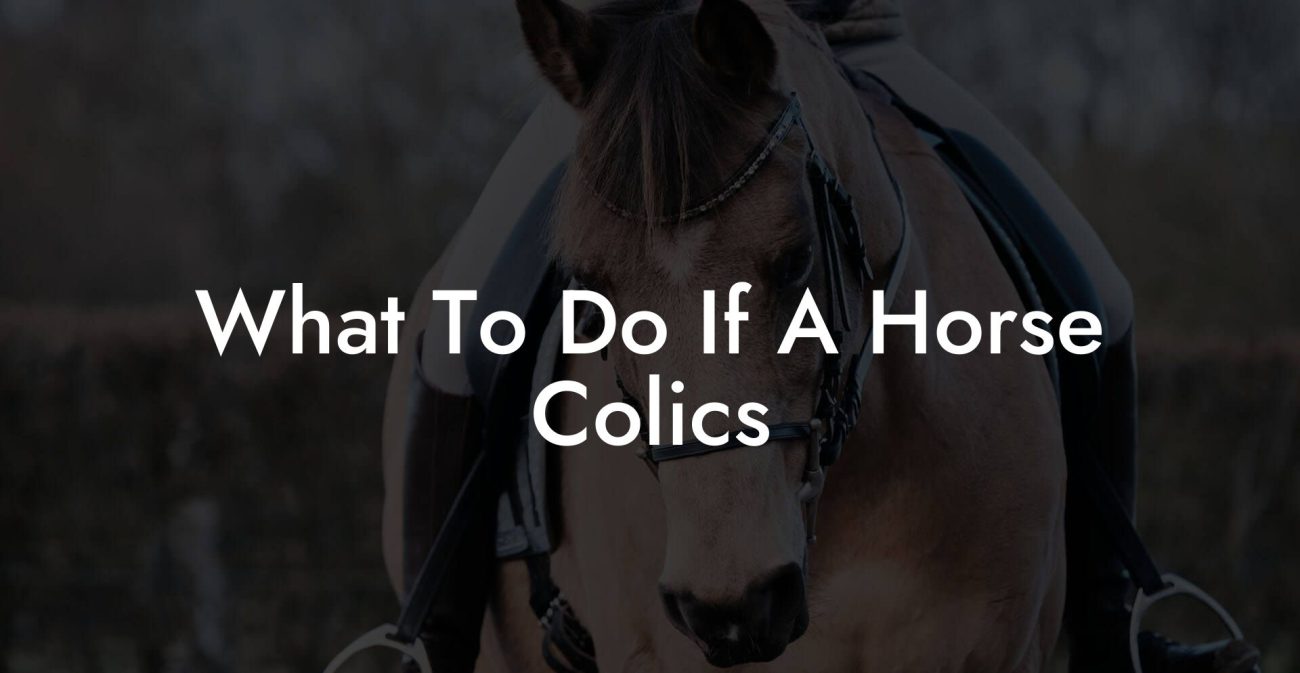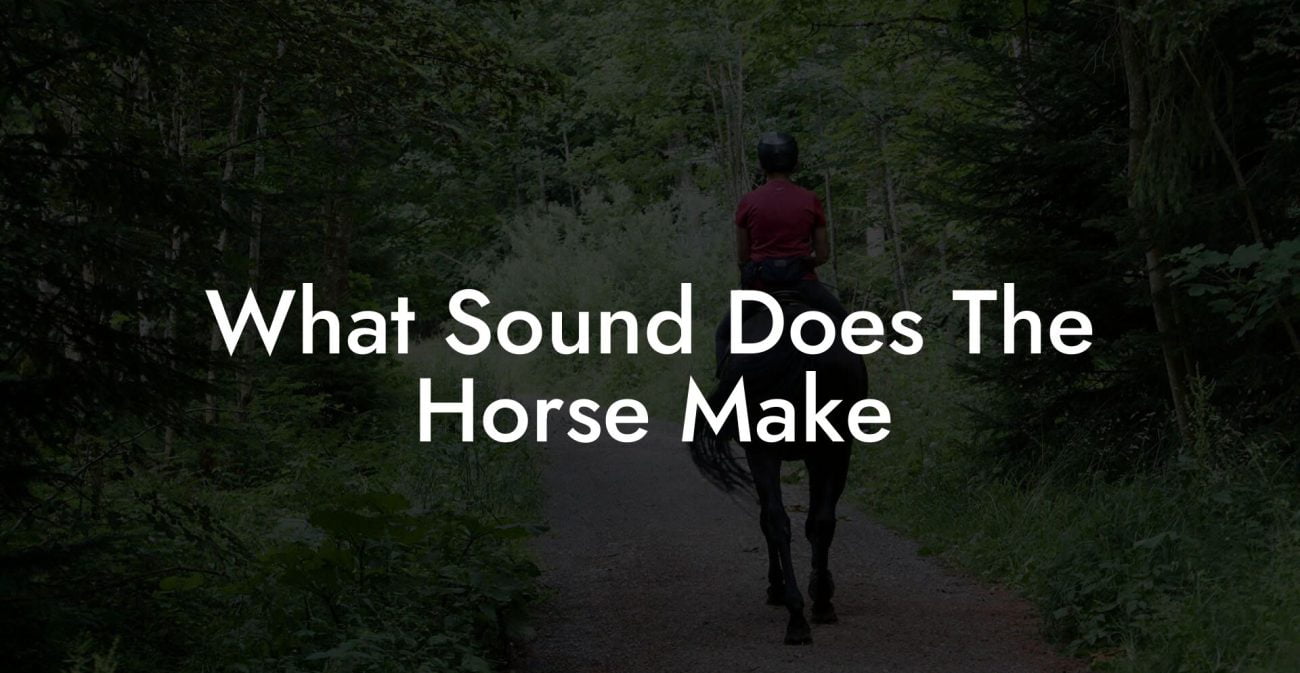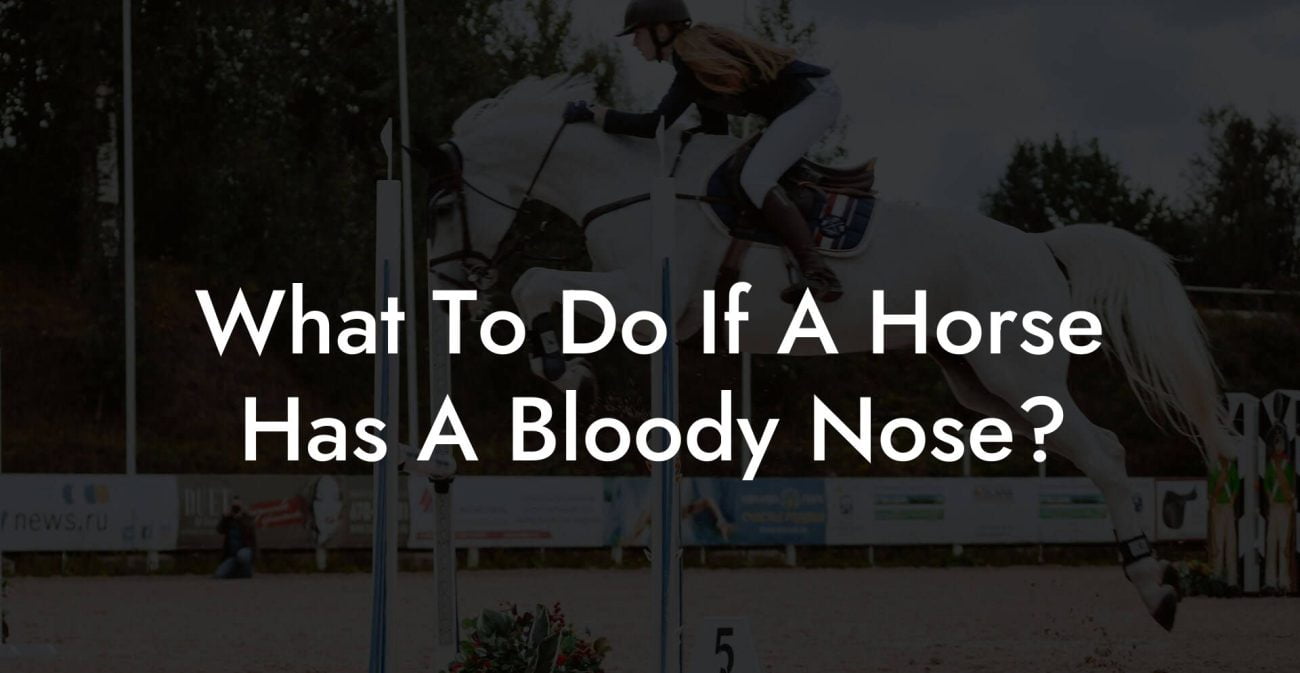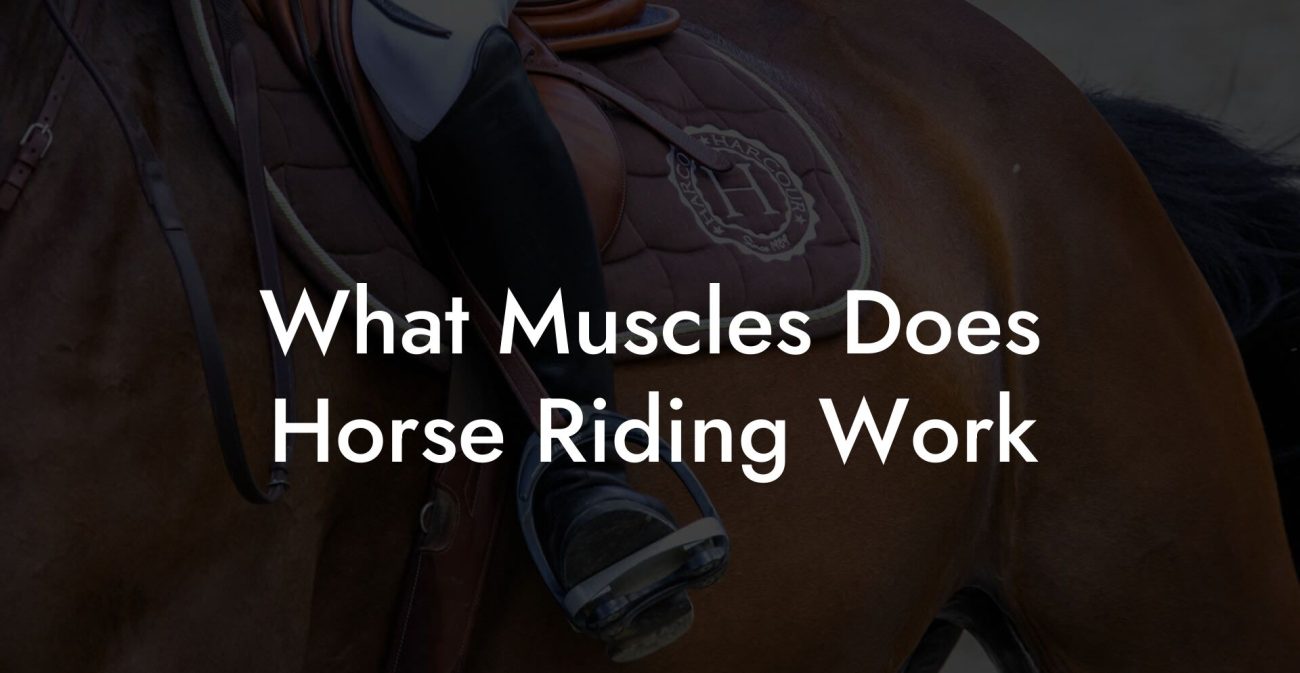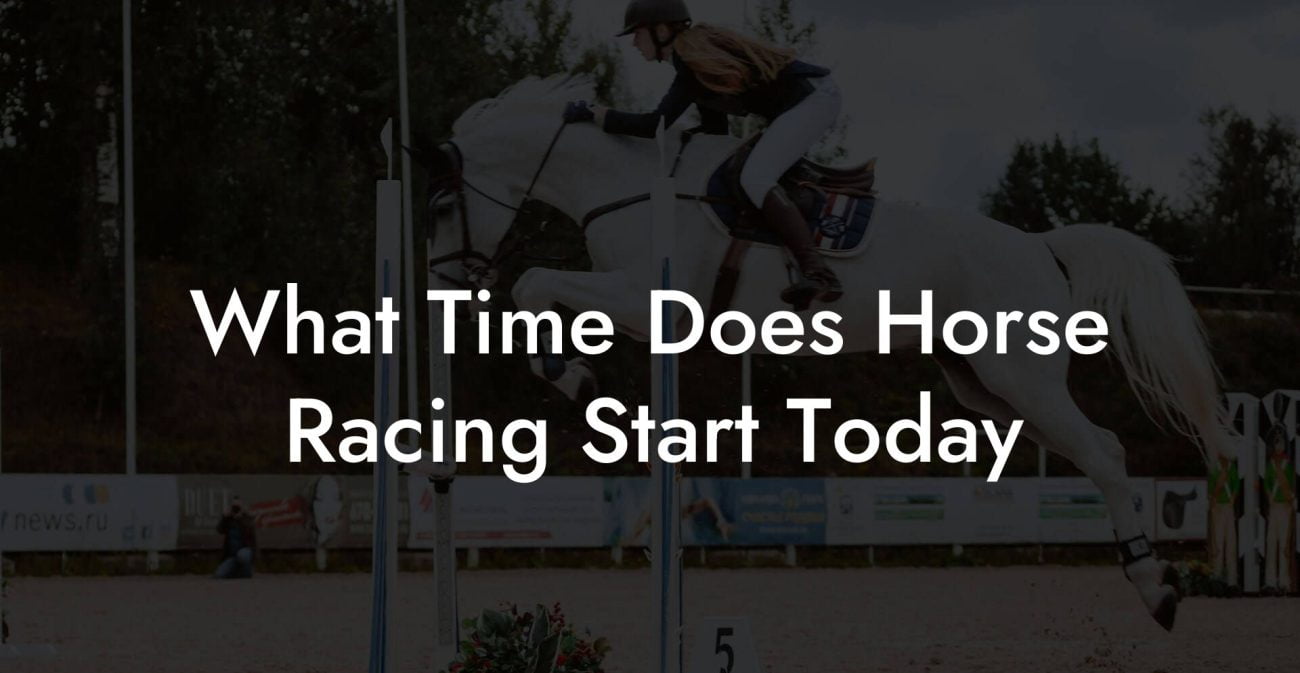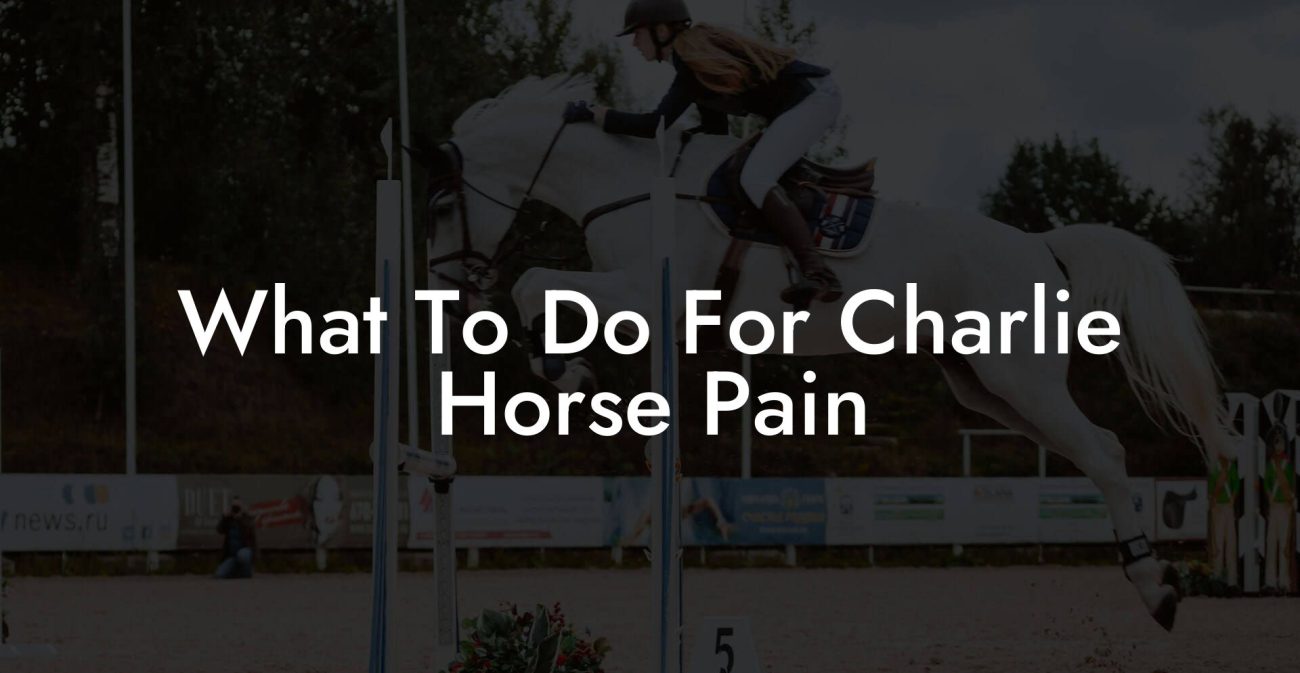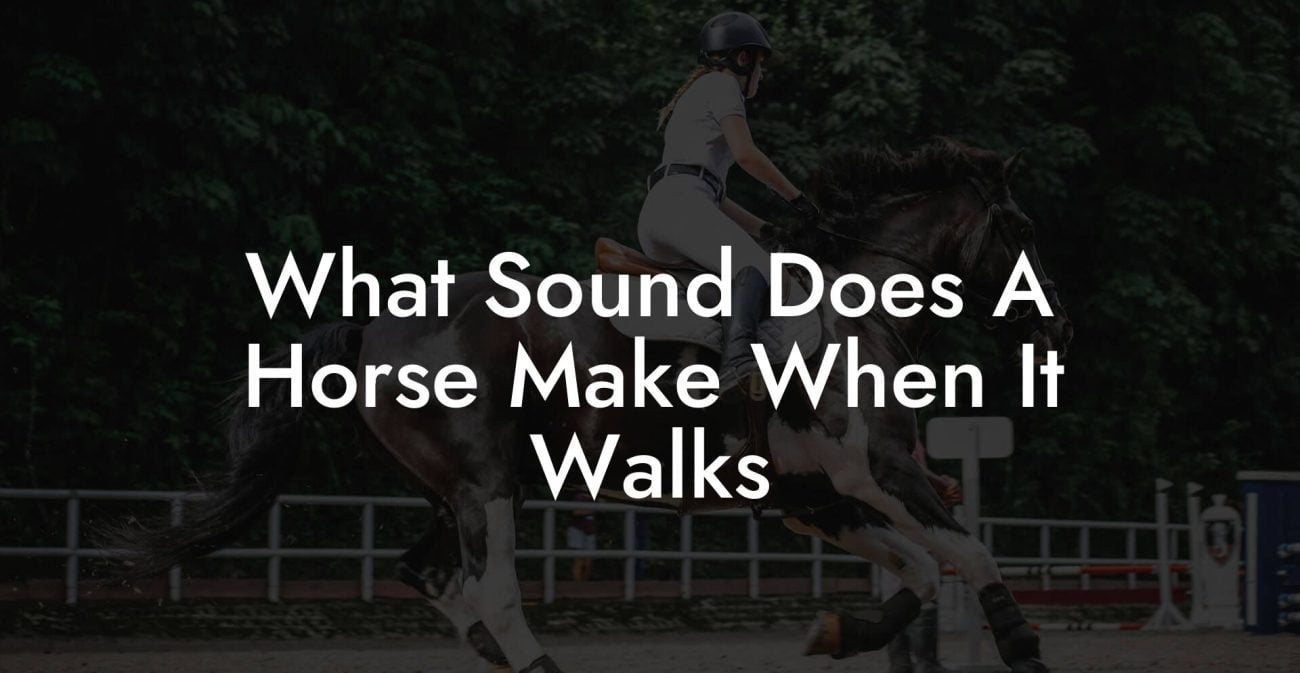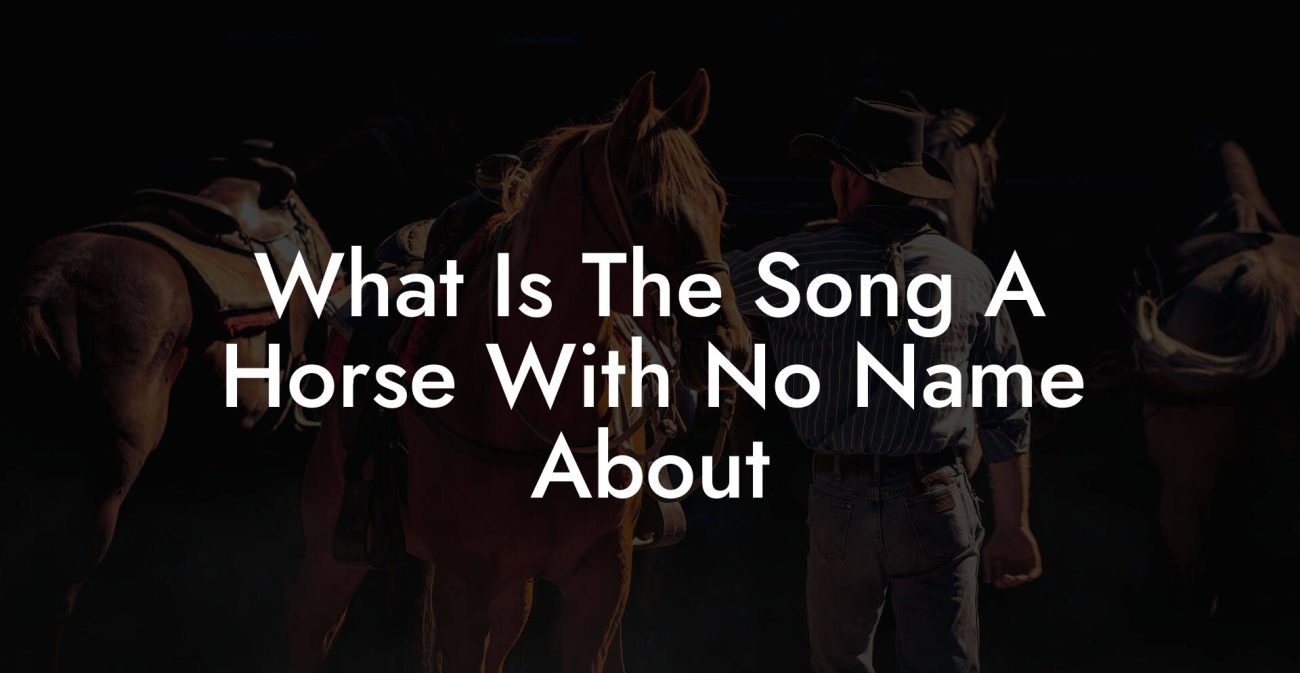Buckle up and saddle your curiosity, because you're about to embark on an enlightened ride into the world of Winchester Horse And Rider. This isn't your grandma's dusty handbook on horse care, this is a fresh, witty, and comprehensive guide where equine elegance meets modern innovation, tailored perfectly for Gen-Z and millennial equestrians. Whether you're a seasoned rider looking to upgrade your stable game or a curious newbie ready to discover a passion you never knew you had, this guide promises to deliver a bountiful trove of expert tips, engaging stories, and actionable advice to help you reward your horse, and yourself, with a care regimen that's as stylish as it is effective.
Quick Links to Useful Sections
- The Legacy and Spirit of Winchester Horse And Rider
- A Gen-Z and Millennial’s Guide to Modern Horse Care
- Equine Healthcare Essentials: Keeping Your Horse in Prime Form
- Routine Grooming & Maintenance
- nutrition and Feeding Strategies
- Regular Veterinary Check-Ups
- Training Tips for a Winning Rider-Horse Partnership
- Building Trust Through Positive Reinforcement
- Interactive Training Sessions
- Consistency and Routine
- Riding Gear and equipment: Must-Have Essentials for the Modern Equestrian
- Safety First: Helmets and Protective Gear
- The Perfect Saddle and Tack
- Innovative Accessories and Technology
- Understanding Horse Behavior: Building a Deep, Intuitive Bond
- Deciphering Equine Body Language
- Developing Mutual Trust and Respect
- Incorporating Play and Enrichment into Daily Routines
- Holistic Approaches to Equine Wellness
- Natural Remedies and Herbal Supplements
- Alternative Therapies: From Acupuncture to Equine Massage
- Environmental and Emotional Well-Being
- Technology and Equine Care in the Digital Age
- Wearable Technology for Horses
- Mobile Apps and Digital Platforms
- Troubleshooting Common Equine Issues: From Hoof Health to Behavioral Challenges
- Hoof Care: The Foundation of Equine Health
- Managing Injuries and Rehabilitation
- Behavioral Challenges and Solutions
- Resources and Community Support: Your Next Steps
- Your Path to Becoming a Winning Winchester Horse And Rider
- Frequently Asked Questions About Winchester Horse And Rider
- Embarking on Your Winchester Journey
The Legacy and Spirit of Winchester Horse And Rider
Winchester Horse And Rider isn’t just a title, it represents a vibrant community and a legacy of equine excellence that has evolved over generations. Born out of a love for horses and the art of horsemanship, Winchester has cultivated a philosophy that blends tradition with trailblazing innovation. In our modern era, this guide redefines what it means to care for a horse, marrying time-honored techniques with digital-age insights that resonate with a tech-savvy, socially conscious audience.
In Winchester circles, every ride is more than just a journey; it's an adventure steeped in respect, trust, and a little dose of rebel spirit. We believe that every horse, and every rider, deserves to feel like a champion, whether you're training for a competition or just wind in your hair and dust trailing behind.
Here, the emphasis is on a holistic approach to equine care, one that nurtures the physical, mental, and emotional well-being of your horse, while also celebrating the dynamic connection between rider and steed. Get ready to dive into a world where cutting-edge care meets rustic charm and every tip is a step toward riding excellence.
A Gen-Z and Millennial’s Guide to Modern Horse Care
Let’s face it, caring for a horse in the 21st century is far from traditional pastoral life. Today’s equestrians are as comfortable with apps and digital trackers as they are with mucking out stables and scouting the perfect pasture. As a next-gen rider, you're juggling multiple passions: sustainability, innovation, and style. And guess what? Your approach to equine care can be a perfect reflection of that!
This guide is crafted with you in mind. We're talking smart stable management, eco-friendly grooming solutions, and even wearable tech for horses that tracks their every heartbeat. Think of it as a playbook for merging the old-school wisdom of horsemanship with modern innovations that take the guesswork out of horse health and riding prowess.
From sustainable feed options and organic grooming products to breakthrough veterinary diagnostics and even social media communities where savvy equestrians share real-world tips, there’s a wealth of knowledge to help both you and your horse shine. So, dust off those reins and join us on this trailblazing expedition into the heart of Winchester Horse And Rider.
Equine Healthcare Essentials: Keeping Your Horse in Prime Form
Just like any VIP athlete, your horse deserves top-notch healthcare that goes beyond the basics. Equine healthcare is the backbone of a thriving riding career, ensuring that every canter, trot, and gallop is executed with optimal performance and comfort. Whether it's daily grooming or comprehensive veterinary check-ups, prevention is always better than cure.
Routine Grooming & Maintenance
Grooming is more than just a pretty ritual, it's an essential way to monitor your horse's health. Regular grooming sessions allow you to check for injuries, skin conditions, and parasites, all while building a bond through gentle care. Equip your stable with eco-friendly shampoos, conditioners, and detangling sprays that both care for the environment and your prized companion’s coat.
Implement a grooming schedule that includes daily brushing, mane and tail care, and periodic deep cleans. The act of grooming keeps fur debris, sweat, and dirt at bay while also serving as a natural stress reliever for your horse. And hey, it's a great opportunity to snap some Insta-worthy shots of your horse glowing under the sunlight.
nutrition and Feeding Strategies
Just as we strive for balanced diets, our horses deserve nutrition that fuels both energy and well-being. A well-formulated feeding program is the cornerstone of equine health. Focus on high-quality forages, grains, and supplements that keep digestive issues in check and ensure your horse's coat stays lustrous. Pay attention to seasonal changes and adjust feed accordingly to mirror the natural rhythms of pasture growth and activity levels.
Integrate fresh water, organic feeds, and even probiotic supplements to maintain gut health. For riders who care about sustainability, consider sourcing locally produced feeds that not only support your horse but also your local economy.
Regular Veterinary Check-Ups
In the world of horse care, prevention and early diagnosis can make all the difference. Schedule regular veterinary visits to ensure your horse is up to date on vaccinations, dental care, and deworming protocols. Advanced veterinary practices now offer digital health records and wearable devices that monitor vital signs, allowing for proactive management of potential health concerns.
Routine check-ups should be your go-to strategy for keeping your horse in peak condition, helping you catch those minor niggles before they turn into major issues. After all, prevention is where the magic of longevity lies!
Training Tips for a Winning Rider-Horse Partnership
The secret sauce behind every successful equestrian journey is a robust, trusting relationship between the rider and their horse. Training is not just about instilling discipline, it's about creating a language of trust and mutual respect. Modern training techniques combine classical horsemanship with innovative methods that resonate with the forward-thinking rider.
Building Trust Through Positive Reinforcement
Gone are the days when harsh methods ruled the stables. Today's training philosophy centers on positive reinforcement. Reward good behavior with treats, soothing strokes, or a well-placed pat on the neck. This not only boosts confidence but also strengthens the bond between you and your horse. Remember: a happy horse is a willing learner.
Employing positive reinforcement techniques transforms setbacks into stepping stones. Whether you're perfecting a jump or mastering a dressage routine, be patient and celebrate every small victory along the way.
Interactive Training Sessions
Incorporate technology and interactive tools into your training sessions. Smart devices like wearable trackers for horses provide real-time feedback on performance metrics such as heart rate and stride consistency. Data-driven insights can refine your training regimen, ensuring that each session is tailored to your horse’s unique rhythm and endurance.
Additionally, consider virtual showjumping simulations or interactive apps designed by equine enthusiasts. These modern tools help bridge the gap between traditional training practices and the digital era, ensuring that your horse’s routine stays fresh, engaging, and effective.
Consistency and Routine
Just like in any sport, the key to mastery in riding and horse care is consistency. Establish a routine that serves as the backbone of your training philosophy, balancing rigorous sessions with ample rest. Consistency not only builds muscle memory but also instills a sense of security in your horse, one that translates into a smoother, more enjoyable ride time.
Schedule regular practice sessions, track progress diligently, and always be on the lookout for any signs of physical or mental fatigue. Remember, your horse follows your lead, maintain a steady course and let mutual trust guide every stride.
Riding Gear and equipment: Must-Have Essentials for the Modern Equestrian
In the fast-paced digital era, equestrians are embracing a blend of fashion-forward design and high functionality in riding gear. From protective helmets and ergonomic saddles to moisture-wicking apparel and smart riding boots, the market is brimming with innovative products designed to elevate your riding experience and ensure safety on every ride.
Safety First: Helmets and Protective Gear
When it comes to safety, there's no room for compromise. A well-fitted helmet is your first line of defense, engineered with state-of-the-art materials to guard against impacts while offering maximum comfort. Look for helmets that integrate ventilation systems and adjustable harnesses for a secure fit, so you can focus on the thrill of the ride without distraction.
Alongside helmets, invest in high-quality body protectors, gloves, and boots that blend comfort with durability. Modern protective gear is designed with both aesthetics and functionality in mind, ensuring you look as cool as you feel, whether you’re jumping hurdles or enjoying a leisurely trail ride.
The Perfect Saddle and Tack
Your saddle is more than just a seat, it's a dynamic piece of equipment that can enhance performance, improve posture, and even prevent injuries for you and your horse. The market has evolved beyond the basic leather saddle, offering custom-fitted options crafted with breathable materials and ergonomic designs that distribute weight evenly.
In addition, modern tack such as bridles, bits, and reins now feature smart materials that minimize discomfort and maximize control. Experiment with different configurations, and consider seeking advice from seasoned professionals to curate a kit that perfectly complements your riding style.
Innovative Accessories and Technology
Welcome to the era of smart stables and digital rein control. Consider integrating accessories like GPS trackers, heart rate monitors, and even temperature sensors into your equine care routine. These gadgets not only help monitor your horse’s performance but provide data that can optimize training sessions, feeding schedules, and overall well-being.
Moreover, equine-specific apps offer everything from stable management to community feedback, ensuring that whether you’re prepping for a competition or planning a trail ride, you're always one step ahead. Embrace the fusion of technology and tradition, and let innovation pave your path to riding excellence.
Understanding Horse Behavior: Building a Deep, Intuitive Bond
The secret to exceptional horsemanship lies in understanding the behavior and personality of your majestic companion. Horses are social, intelligent creatures with intricate ways of communicating. By learning to read their signals, body language, and subtle cues, you can forge a bond built on respect, empathy, and effective communication.
Deciphering Equine Body Language
Ever noticed how a horse’s ears twitch or its tail swish? These are not random actions, they’re intricate forms of communication. A horse’s ears can reveal a lot about its mood; forward-facing ears suggest curiosity and engagement, while pinned-back ears might indicate discomfort or aggression. Similarly, subtle shifts in posture or gait can offer insights into emotional cues. Developers of equine behavior studies now offer apps and guides that translate these silent signals into actionable insights for riders.
Developing Mutual Trust and Respect
Trust is earned over time, one kind gesture at a time. Start with groundwork exercises that encourage your horse to feel secure in your presence. Activities like leading, lunging, and even simple grooming sessions lay the foundation for a trusting relationship. With every gentle pat, every reassuring word, you build a bridge that spans the gap between human and horse.
Remember, a horse that trusts you will respond with loyalty and enthusiasm, making every ride an experience of synergy and mutual respect.
Incorporating Play and Enrichment into Daily Routines
Just as we all appreciate a little levity in our lives, horses thrive on play too. Integrate activities that stimulate your horse's natural curiosity, treat puzzles, obstacle courses, and novel environments provide mental stimulation and help reduce stress and boredom. This holistic approach to enrichment is particularly effective in stables where horses may feel confined, turning routine care into an engaging, interactive experience.
Holistic Approaches to Equine Wellness
Beyond the standard checklists of grooming and training lies a vibrant world of holistic equine wellness. This philosophy embraces a full spectrum of natural remedies, alternative therapies, and lifestyle adjustments that not only mend physical ailments but also nurture the spirit of your horse.
Natural Remedies and Herbal Supplements
Many modern riders are turning back to nature for solutions that provide gentle yet effective relief. Incorporate herbal supplements and natural anti-inflammatories into your horse’s routine. Ingredients like yucca, aloe vera, and omega-3 fatty acids are known to reduce inflammation and promote muscle recovery. These natural remedies work hand in hoof with conventional treatments, often resulting in fewer side effects and a happier, healthier horse.
Alternative Therapies: From Acupuncture to Equine Massage
Alternative therapies are gaining traction in equine circles as effective methods to enhance overall wellness. Equine acupuncture, for instance, targets specific pressure points to boost blood flow and alleviate chronic discomfort. Similarly, deep-tissue massage and myofascial release can ease muscle tension, accelerate recovery after strenuous training, and even improve posture.
While these therapies may seem avant-garde, they are backed by growing numbers of equestrians who swear by their transformative benefits. Consult with a specialized equine therapist to design a regimen that incorporates these holistic techniques seamlessly alongside traditional practices.
Environmental and Emotional Well-Being
The environment in which your horse lives plays a critical role in its overall well-being. Ensure that stables and pastures are safe, clean, and enriched with natural elements. Adding elements like soft bedding, spacious pastures, and even wind shields can drastically improve your horse’s comfort and reduce stress.
Emotional well-being is just as important as physical health. A calm, secure environment can help reduce anxiety and behavioral issues, making alternative therapies more effective. Integrate soothing music, natural light, and even aromatherapy in your stable design to create a serene retreat for your four-legged friend.
Technology and Equine Care in the Digital Age
In today’s hyper-connected world, even time-honored practices like horse care are undergoing a digital revolution. Technology now plays a pivotal role in streamlining stable management, enhancing training effectiveness, and providing data-driven insights into your horse’s health.
Wearable Technology for Horses
Imagine a wearable device for your horse that tracks vital signs, monitors movement, and even detects early signs of discomfort, welcome to the modern stable. These smart trackers use advanced sensors to provide real-time data, allowing you to monitor your horse’s heart rate, activity levels, and sleep patterns with incredible precision.
Such technology not only empowers you with actionable information but also helps prevent injuries by ensuring that your horse’s training and recovery periods are optimized to its specific needs.
Mobile Apps and Digital Platforms
The digital age has ushered in an era of mobile apps and online communities that put a wealth of equine knowledge at your fingertips. From scheduling veterinary appointments and ordering custom feed to participating in virtual training seminars and horse care webinars, modern equestrians enjoy unparalleled connectivity. These platforms foster a global community where tips, tricks, and success stories are shared, making the journey of horse care as interactive as your favorite social feed.
Leveraging these digital tools can transform your daily routines into data-powered, efficient systems, a boon for riders keen on marrying tradition with technology.
Troubleshooting Common Equine Issues: From Hoof Health to Behavioral Challenges
Even the most dedicated riders encounter hurdles along the way. Whether it’s an unexpected limp, a bout of colic, or sporadic behavioral challenges, being prepared with knowledge and expertise is crucial. A proactive approach to troubleshooting common equine issues ensures that your horse remains not only healthy but also eager to hit the trails.
Hoof Care: The Foundation of Equine Health
The health of your horse begins from the ground up, literally. Regular hoof care is essential, involving routine cleaning, trimming, and monitoring for signs of infection or injury. Whether you work closely with a farrier or have mastered the art yourself, ensure that proper techniques are employed to prevent common issues such as thrush, cracks, and abscesses. Remember, well-maintained hooves can mean the difference between a smooth ride and chronic discomfort.
Managing Injuries and Rehabilitation
Injuries are an inevitable part of any physically active life, and your horse’s career is no exception. Knowing the basics of first aid in equine care can be a lifesaver, literally. R.I.C.E. (Rest, Ice, Compression, Elevation) isn’t just for human athletes; adapting these principles can significantly help during the initial phases of an injury. Complement this with veterinary guidance and an adjusted training program to ensure a smooth rehabilitation process.
Behavioral Challenges and Solutions
Horses, like people, have their own quirks and moods. Tackling behavioral challenges, from reluctance to load into a trailer to stubborn resistance during training, requires patience, empathy, and consistency. The key is to identify underlying issues, be it discomfort from an ill-fitting saddle or anxiety stemming from past trauma. Incremental training, paired with positive reinforcement, often yields remarkable results. And when in doubt, don’t hesitate to tap into the reservoir of online communities and expert consultations available at your fingertips.
Resources and Community Support: Your Next Steps
No rider is an island, and the world of Winchester Horse And Rider thrives on community. From local riding clubs to online forums and social media groups, there is a vibrant network of enthusiasts ready to share experiences, offer advice, and celebrate every success along your equestrian journey.
Here are some actionable next steps to integrate yourself into this thriving community:
- Join Local Riding Clubs: Connect with fellow enthusiasts in your area for group rides, workshops, and friendly competitions. Not only does this build camaraderie, but it also offers practical tips from experienced riders.
- Participate in Online Communities: Platforms like Instagram, Facebook, and specialized equestrian forums can be invaluable resources. Follow influencers, join hashtags, and engage in discussions to expand your knowledge.
- Attend Workshops and Webinars: Education never stops in the world of horse care. Seek out local events, online courses, and masterclasses that cover everything from advanced grooming techniques to the latest in equine nutrition.
- Subscribe to Equestrian Journals: Stay updated with the latest research, trends, and breakthroughs in equine wellness by subscribing to reputable magazines and newsletters.
- Visit Reputable Equine Websites: Bookmark trusted sites that offer expert advice, product reviews, and success stories to keep you motivated and informed.
These resources not only foster learning but also create a sense of belonging, an essential ingredient for cultivating the passion and expertise that define a true Winchester Horse And Rider.
Your Path to Becoming a Winning Winchester Horse And Rider
Every journey starts with a single step, and your path to becoming a master in the art of horse care is paved with enthusiasm, determination, and a willingness to embrace both tradition and innovation. By integrating state-of-the-art technology, holistic wellness practices, and a deep understanding of equine behavior into your daily routine, you're not just maintaining a stable, you're cultivating a lifestyle.
Consider this guide your roadmap, an ever-evolving manifesto that invites you to take charge of your riding destiny with a confident stride. From nurturing the physical health of your horse to building a relationship grounded in mutual respect and trust, every facet of this journey is a celebration of life’s dual passions: the art of horsemanship and the joy of living boldly.
Whether you're fine-tuning your grooming techniques, rethinking your nutritional strategy, or simply marveling at the technology that keeps your horse in check, the world of Winchester Horse And Rider beckons you to explore, innovate, and ultimately, thrive. Embrace every challenge, celebrate every success, and remember that every ride is an opportunity to learn and grow.
As you leave this guide, let it inspire you to take new steps, join supportive communities, and continuously refine the delicate balance between tradition and modernity. The art of riding is continuously evolving, and with the right blend of passion, perseverance, and practicality, there's no limit to how far you and your horse can go.
Frequently Asked Questions About Winchester Horse And Rider
Dive into these commonly asked questions that cover a wide range of topics from care techniques to innovative practices. These insights are crafted to clear up any doubts and empower you with the knowledge you need to excel as a modern equestrian.
1. What makes the Winchester approach to horse care unique?
The Winchester approach blends traditional horsemanship with modern innovations, emphasizing holistic care that includes physical, nutritional, and technological components to promote overall equine well-being.
2. How do modern technologies enhance equine care?
Devices like wearable trackers, smart apps, and digital health records provide real-time data, improve training precision, and facilitate early diagnosis, ensuring your horse receives personalized care.
3. Can alternative therapies really benefit my horse?
Yes, many riders report significant improvements by integrating natural remedies, acupuncture, and equine massage with conventional care practices, fostering physical recovery and reducing stress.
4. What are the key components of a solid equine nutrition plan?
A balanced equine diet focuses on high-quality forages, grains, organic supplements, and proper hydration, ensuring that your horse maintains peak performance and health.
5. How important is community support in horse care?
Community support is invaluable, local clubs, online groups, and educational workshops provide practical tips, emotional encouragement, and a shared passion that enriches every aspect of riding.
6. What should I look for when choosing riding gear?
Prioritize safety and comfort with gear that includes a well-fitting helmet, ergonomically designed saddles, moisture-wicking apparel, and accessories that blend advanced materials with aesthetic appeal.
7. How do I approach grooming to ensure my horse's comfort and health?
Regular grooming sessions coupled with proper cleaning products and scheduled maintenance help monitor your horse’s health, build trust, and prevent potential issues such as skin irritations or parasitism.
8. Are there specific strategies for training that work best for modern riders?
Yes, a combination of positive reinforcement, technology-assisted training, and a consistent routine creates an environment where both horse and rider flourish, building a deep bond in the process.
Embarking on Your Winchester Journey
Every stride you take in the world of Winchester Horse And Rider is a testament to your passion for excellence, innovation, and the timeless bond between equine and rider. As you put these insights into practice, remember that the journey of horse care is as dynamic as the ride itself. With modern technology blending seamlessly alongside time-honored traditions, there’s never been a more exciting time to nurture the horses that carry our dreams.
Embrace the challenges, celebrate the victories, and join the vibrant community of modern equestrians who dare to blend the best of both worlds. Your quest for equine excellence is a celebration of progress, each brush stroke, every measured step, and every innovative idea is a building block for a future where you and your horse shine as one.
So gear up, saddle in, and let the spirit of Winchester Horse And Rider echo in every gallop and every graceful trot. With heart, humor, and a keen eye on the horizon, your journey is set to redefine what it means to care for, ride, and truly connect with your equine partner.
Now is the time to embrace the revolution in horse care, mixing energy, ingenuity, and authenticity to create a legacy that's as enduring as the bond you share with your horse. Enjoy the ride, and may your journey always be filled with adventure and unforgettable moments.


